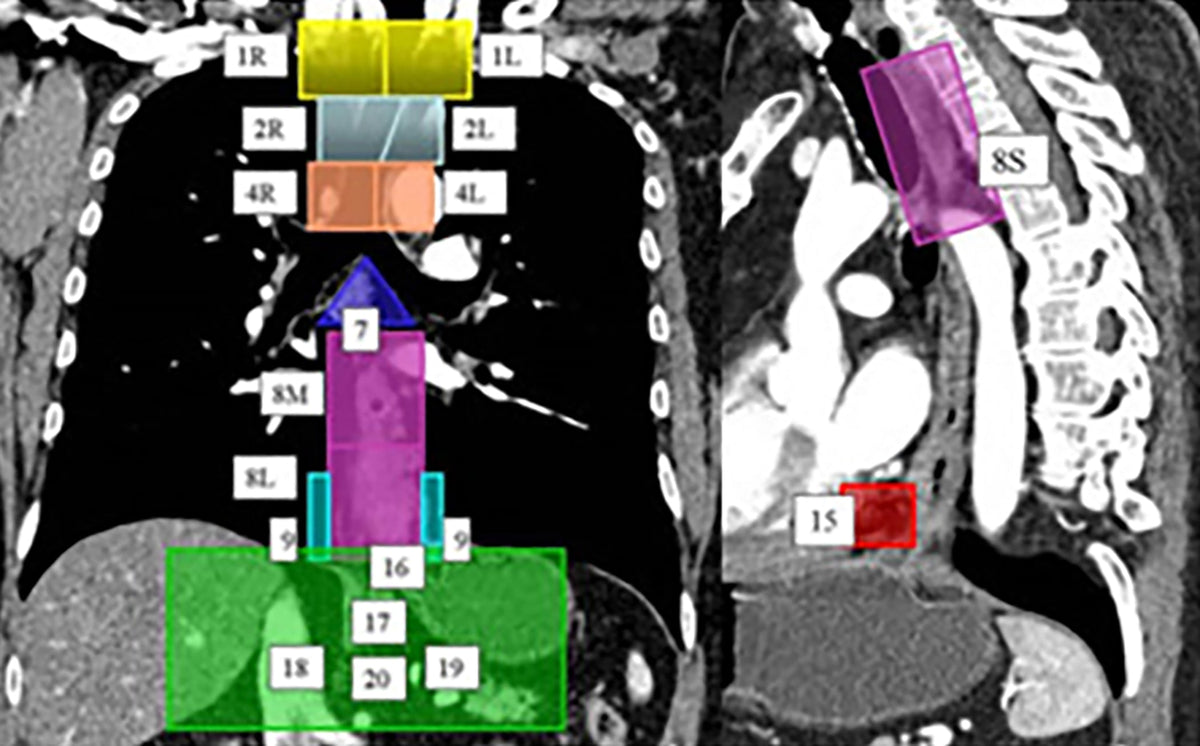
Esophageal cancer: when esophagus' cells grow out of control
|
|
Time to read 3 min
|
|
Time to read 3 min
Esophageal cancer is a type of cancer in the digestive system, located in the esophagus (a hollow, fibromuscular tube that connects the throat and the stomach, with its main function being the passage of food for subsequent digestion).
First, food is ingested and processed in the mouth through mechanical digestion by the teeth and tongue movement, enhanced by chemical digestion performed by salivary enzymes. Once swallowed, the food moves to the pharynx and then to the esophagus, which is one of the initial components of the digestive system and gastrointestinal tract. The esophagus is assisted by several muscular rings, the upper and lower esophageal sphincters, whose functions include facilitating the ingestion of the food bolus and coordinating esophageal muscles to reinforce peristaltic contractions that propel the food bolus to the stomach.
Esophageal cancer typically begins in the lining of squamous cells or the glandular/columnar tissue in the esophagus.
Doctors classify esophageal cancer based on the type of cells involved, such as:
A number of factors can increase the risk of esophageal cancer. Some risk factors are manageable, such as adopting a healthier lifestyle, while others, like family history, cannot be controlled.
Risk factors for esophageal cancer include:
Although most esophageal cancers do not cause symptoms until they have spread too far to be cured, individuals with early-stage esophageal cancer may experience some of the following symptoms:
If previously diagnosed with Barrett's esophagus, a precancerous condition that increases the risk of esophageal cancer due to chronic acid reflux, it is essential to consult a doctor about which signs and symptoms to monitor that could indicate the condition is worsening.
In the early stages (I and II), approximately 40 out of 100 people (40%) survive for five years or more if the cancer is confined to the esophagus. The more advanced the tumor, the lower the chances of survival, specifically around 21 out of 100 people (21%) if the cancer has spread to nearby lymph nodes. Most individuals with advanced esophageal cancer live between 3 and 12 months after diagnosis. About 4 out of 100 people (4%) live for five years or more. Slightly lower survival rates have been reported for patients with squamous cell carcinoma compared to those with adenocarcinoma.
IMPORTANT: Early diagnosis of cancer is crucial since cancer detected at an early stage—before it has grown significantly or spread to other parts of the body—is more likely to be treated successfully. In contrast, if the cancer has spread to other organs, treatment becomes more difficult, and the likelihood of survival is much lower.
For years, imaging techniques such as contrast radiography of the upper gastrointestinal tract and endoscopy have been at the forefront of cancer diagnosis. Unfortunately, these procedures have inherent limitations. First, the toxicity associated with the use of a radiocontrast agent like barium sulfate can be harmful to patients. Second, improper use of endoscopy can cause injuries to the gastrointestinal tract during imaging. Third, such scans rarely provide essential molecular information. Finally, all these procedures add significant costs throughout the treatment process.
Esophageal cancer is a type of cancer in the digestive system, located in the esophagus (a hollow fibromuscular tube that connects the throat and stomach and its main function is, therefore, the passage of food for subsequent digestion).
Esophageal cancer usually begin in the squamous cell lining and glands or columnar tissue in the esophagus.
Adenocarcinoma and squamous cell carcinoma are the two most common types of esophageal cancer.
Drinking alcohol, smoking, obesity or not following a balanced diet are some of the main risk factors for esophageal cancer.